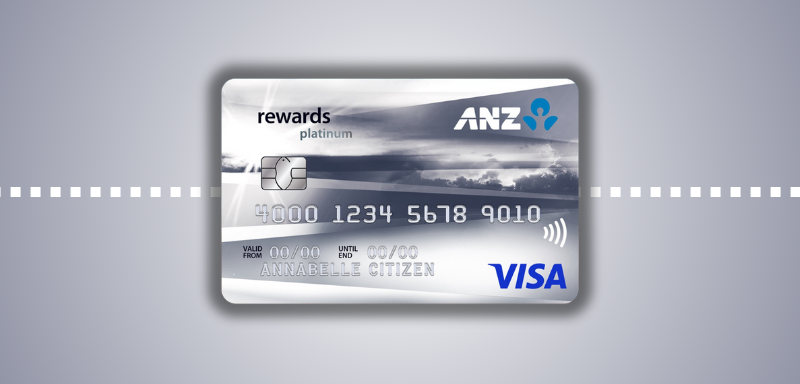Women Finance
Financial Planning for Women Entrepreneurs
Step-by-step financial planning for women entrepreneurs covers budget design, consistent cash flow, tax strategy, business funding, investing, resilience, and creating long-term wealth. Master your business finances today.
Advertisement
Building a business feels a lot like assembling a puzzle with missing pieces. For many, women entrepreneurs weave passion with practical know-how, yet financial planning can seem like a hidden challenge.
Solid financial planning transforms the entrepreneurial journey from guesswork to strategy. It structures dreams, helping women entrepreneurs steer businesses with clarity through both calm and stormy markets.
If you’re looking to sharpen your money skills, or simply want to feel more confident around numbers, this guide unpacks tools and strategies that remove financial fog for women entrepreneurs.
Designing a Business Budget that Grows with You
Women entrepreneurs who design adaptive budgets set up long-lasting financial resilience. Creating a living budget helps you anticipate lean times and invest strategically during periods of growth.
Instead of fixed, rigid spreadsheets, adaptive budgets respond to the changing pace of business. Set aside time each month to adjust figures based on sales trends, known expenses, and market signals.
Practice Scenario Planning to Anticipate Change
Scenario planning breaks budgeting paralysis. Start by listing optimistic, moderate, and challenging possibilities in revenue for the upcoming quarter. For example, calendar seasonal bumps or new client onboarding.
In each scenario, outline responses. If sales surge, where will you reinvest? If cash shrinks, what can wait? This script prevents blind spots and gives women entrepreneurs actionable plans at the first change sign.
Concretely, a women entrepreneur might say, “If client X delays payment, I’ll pause ad spending for a month.” Practicing this response out loud delivers calm during real challenges.
Separate Personal and Business Finances with Intent
Mixing accounts muddles your business’s health, making tax and cash flow tracking confusing. Open a business checking account before your first sale. Use only this account for business income and all related expenses.
If you use credit cards, designate one card for business purposes only. This habit helps women entrepreneurs spot creeping costs and prepare clear financial records when applying for loans or reporting earnings.
Analogous to sorting laundry by color, separating accounts prevents ”bleeding” between personal and business funds. This clarity helps with year-end prep and funding applications.
| Budget Step | Tool to Use | Benefit | Next Action |
|---|---|---|---|
| Monthly Revenue Review | Spreadsheet/Accounting App | Spot trends early | Adjust sales targets and campaigns |
| Expense Categorization | Dedicated Business Account | Clear tax records | Automate monthly transfers |
| Scenario Planning | Mind Map | Faster crisis response | Script action steps for each scenario |
| Quarterly Audit | Bookkeeping Service | Reveal inefficiencies | Block calendar reminder each quarter |
| Emergency Fund | High-Yield Savings | Cushion unexpected hits | Transfer 5% of net profit monthly |
Building Reliable Cash Flow from Month to Month
Women entrepreneurs who secure steady cash flow protect their businesses from sudden shocks. Set up reliable income with diversified clients or multiple offerings if possible.
Create reminders for invoicing and gently follow up after seven days overdue. This hands-on habit ensures cash doesn’t slip through gaps in communication or systems.
Strategically Space Client Payment Due Dates
Review client contracts to avoid all invoices being due the same day. Spread due dates across the month, so money enters your account steadily and predictably, softening any income spikes or dips.
- Break projects into milestones for partial payments, providing regular deposits and protecting against late-payer risk each month.
- Automate invoice reminders as soon as a project closes, so clients never forget what’s owed and when.
- Offer early-payment discounts, like two percent off if paid within seven days, motivating quick action and creating smoother cash flow for women entrepreneurs.
- Implement late-payment policies, letting clients know upfront about fees or access suspensions. This approach communicates value and motivates on-time payments.
- Use bank account alerts for deposits, so you know right away when funds arrive or if action is needed to prompt a client.
With these adjustments, women entrepreneurs introduce more stability and predictability to monthly cash flow—a vital shield during unstable economic moments.
Plan for Irregular Income with Greater Confidence
If business revenue shifts each month, average your past six months’ income. Use that number as a guide for basic expenses, only spending above it after profits are confirmed.
- Set an income “floor” to cover all must-have business expenses, and pay yourself a fixed modest salary regardless of monthly profit changes.
- Transfer surplus funds out of your main business account, so your core operating budget never gets distorted by seasonal highs.
- Invest in assets during strong months—software tools or marketing—when reserves are above average, boosting business capacity for the next leaner period.
- Batch nonessential purchases only after you hit key revenue benchmarks, so cash always covers essentials first.
- Automate end-of-month financial reviews, blocking out 30 minutes on your calendar, to recalibrate spending habits and business priorities in real time.
By treating irregular income as regular with clever boundaries, women entrepreneurs maintain stability even through wildly uneven sales seasons. This practice reassures lenders and attracts reliable partners.
Smart Tax Strategies that Remove Anxiety
Women entrepreneurs adopting proactive tax strategies replace stress with peace of mind. Small steps each quarter prevent panic during the busy tax season.
Regularly set aside a portion of each payment for taxes. Depositing estimated tax payments each quarter keeps you on track and avoids large, unplanned bills.
Organize Financial Documents Ahead of Tax Season
Start a folder (physical or digital) labeled by tax year. Every invoice, receipt, and business expense goes immediately into it. This habit saves hours come filing time and prevents missed deductions for women entrepreneurs.
Monthly, sort receipts into clear categories—supplies, client gifts, meals, travel, and advertising. Update your bookkeeping app so these costs are tagged for quick reference come March or April.
This routine pays off if you ever get audited; organized records help you make your case clearly and quickly. Being proactive shrinks tax prep to just reviewing a well-kept folder.
Maximize All Eligible Deductions
Women entrepreneurs can legally reduce their tax bill by tracking all eligible deductions. Examples include home office expenses, business equipment, internet bills, phone charges, and continuing education events that grow expertise.
Before claiming a deduction, check it’s used primarily for business. Keep a short log of shared-use items, like internet or workspace, to show the business allocation to your accountant if asked.
Regular review with a tax pro ensures you’re using every available strategy tailored to your actual business needs.
Building Financial Resilience through Emergency Planning
Women entrepreneurs who prepare for emergencies bounce back faster after setbacks. Setting up an emergency fund provides a personal safety net for unpredictable circumstances like client drop-off or sudden equipment failure.
Establish a savings account for business emergencies only. Automate monthly transfers—even small amounts—into this account and avoid dipping into it unless a true crisis strikes.
Calculate Your Emergency Target Amount
List the non-negotiable expenses: payroll, rent, utilities, recurring software, and minimum supplies. Multiply the monthly total by three for a basic cushion, or six for extra security.
If you’re unsure, starting with one-month’s expenses is a strong first milestone. Celebrate each time you reach a new savings checkpoint—it builds lasting confidence for women entrepreneurs.
Update the target amount each year or after major business changes, so your safety buffer always matches your actual risk.
Protect Your Business with Simple Insurance Policies
Look at business insurance as armor, not a burden. Liability, equipment, and cyber insurance shield your gains. Compare at least three quotes—even for home-based work—since risks and requirements can differ widely.
Ask agents for plain-English scenarios. How does coverage apply if a client trips, or if a laptop is stolen? Real-world examples give women entrepreneurs clarity and help avoid the wrong policy.
Review and update policies annually so as your business evolves, your safety net grows with it.
Navigating Funding and Credit with Clarity
Clear knowledge of funding options empowers women entrepreneurs to choose what supports their business rather than what’s trendy. Understanding terms prevents costly missteps.
Decide if equity (giving up a share) or debt (taking a loan) fits your goals best. Each choice shapes business decisions, outside influence, and the pace of growth.
Prepare Lender-Friendly Financial Statements
Before approaching any lender, update balance sheets and profit-loss reports. Lenders weigh reliability on clean, consistent documentation. Women entrepreneurs stand out by presenting organized, detailed records and realistic financial projections.
Include explanations for unusual income swings or expenses, so lenders don’t guess. Showing you understand your numbers improves trust and speeds up application review times.
Treat a lender meeting like a pitch, rehearsing answers to questions about revenue trends or cash reserves. Confidence comes from practice.
Weigh Funding Choices by Stage of Business
For startups, explore grants and microloans before riskier forms of credit. Women entrepreneurs can find programs designed to level access and lower barriers, especially in the first two years.
As your business matures, evaluate lines of credit and strategic investors for scaling up. Peer groups and accelerator programs add mentorship and visibility, not just funds—seek partners who believe in your mission.
Map funding options to business milestones—for example, a line of credit during inventory ramp-up or revenue-backed loans once you spot steady cash flow trends.
Creating Wealth by Investing in Your Business’s Future
Women entrepreneurs who prioritize consistent investing widen their options. A strong investment strategy covers retirement, future training, and expanding business assets with intention.
Start with a retirement account designed for small owners, like SEP IRAs or solo 401(k)s. Contribute even a small amount monthly, increasing as profits allow. Compound growth favors consistency over size.
Schedule Regular Investment “Tune-Ups”
Block time each quarter to check your business and personal investments. Are accounts serving current needs? Adjust asset allocations and contributions to match economic changes, business cycles, or your own risk comfort.
If you find yourself skipping this review, link it to a routine—like a payday coffee break—making it a natural part of your workflow. Habit turns investment into growth rather than stress.
Invite a trusted financial advisor periodically to review your approach, providing new ideas or correction if you drift off-course.
Identify Growth Investments Beyond Money
Not all investments show up as dollars. Women entrepreneurs should allocate budget for coaching, networking, or tech upgrades. These “soft” investments improve skills, spark ideas, and attract strong collaborators.
Plan a percentage of annual profits toward courses or workshops you’ve researched. Make sure any investment aligns with this year’s business targets.
Document the outcomes, so you expand what works with every learning and networking opportunity.
Conclusion: Owning the Financial Plan Brings Freedom
Women entrepreneurs taking charge of their finances create stability and independence with every decision. Each planning habit, from cash flow to insurance, builds a resilient business that weathers setbacks and captures new possibilities.
Financial planning isn’t just paperwork—it’s a daily practice that shapes opportunity. Practicing these concrete steps lets women entrepreneurs pursue dreams with greater peace of mind and practical control.
Small, steady actions accumulate into powerful results. The women entrepreneurs who revisit, revise, and strengthen their plans find themselves leading not only successful businesses but also building enduring personal wealth.
Trending Topics

Beyond Bank Low Rate Personal Loan review: Borrow money for any purpose
The Beyond Bank Low Rate Personal Loan offers fixed rates and up to $200,000 in funding. Read on to see if it’s the right choice for you!
Keep ReadingYou may also like

ANZ Rewards Platinum Credit Card review: Points Perks Galore
The ANZ Rewards Platinum Credit Card combines valuable rewards with essential benefits. See if it's the right card for you.
Keep Reading
NAB Rewards Signature Credit Card review: Bonus Points!
The NAB Rewards Signature Credit Card offers up to 180,000 bonus points, extensive travel benefits, and more. Check this full review!
Keep Reading
